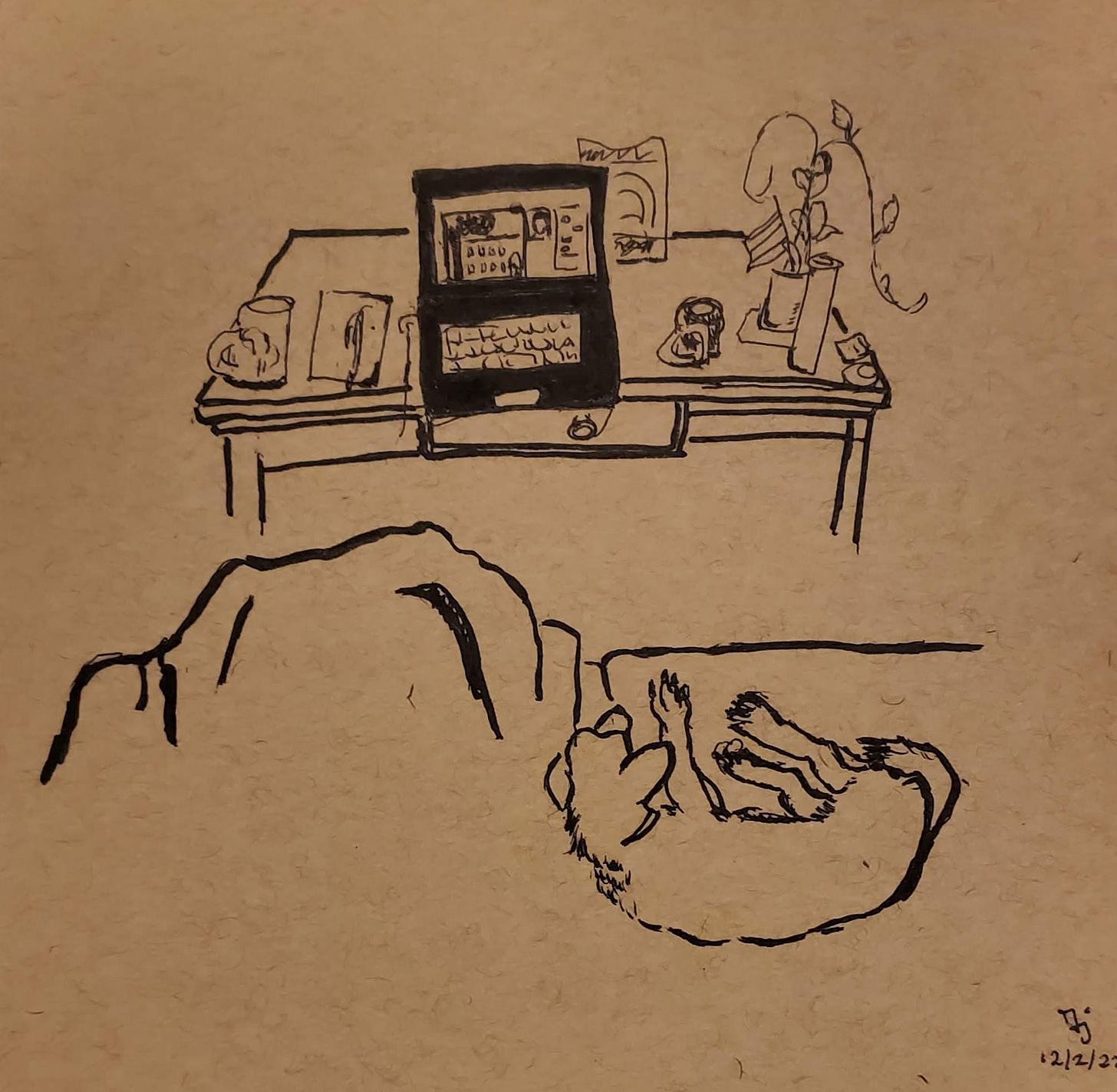A Newsworthy Account: Trees, Roofs, and Forward Momentum
Thoughts on a journalism fact-checking workshop and a Ukrainian hospital
A Newsworthy Account is a recurring series within The Foyer Chronicles taking a different look at world events. Here, we’ll consider what global stories mean for our daily lives. Who reads news and for what purpose? We’ll consider under-reported stories and ask what counts as news? What deserves our attention, and how do we make that decision?
The woman on my laptop screen pulls up a video of a bombed hospital building and talks about the trees and the shape of the roof. Sitting on my couch at home, I readjust the blanket so it covers my feet. The video is from Ukraine, and the woman, whose name is Aiganysh Aidarbekova, is from Belllingcat.
The Zoom started at 6am here in Portland. I’m one year into my decision to pursue a balanced creative and financial life, and I signed up for a fact-checking workshop with some hope that this skillset will help strengthen my writing and journalism. At magazines like The Atlantic and Scientific American, fact-checkers hold an important role to review stories with a fine-tooth comb. They check word by word and number by number to ensure the story is accurate. While the reporter writing the story gets their name at the top, fact-checkers are some of the many people who help to get it there.
Aiganysh is the second speaker for the day. She is showing us how she and her colleagues at Bellingcat would verify if this video actually happened or not. As an independent organization of researchers, investigators, and citizen journalists, Bellingcat use open source data (like social media) to investigate conflict, crimes, and human rights abuses from around the world.
Closing the video, Aiganysh asks the virtual audience of journalists, editors, and fact-checkers what we might do next to verify if the building in the video was indeed a hospital in Ukraine. We end up turning to Google Maps and its satellite imagery. We know the attack happened in a specific town in Ukraine, so we search for all the hospitals in the area. From the satellite imagery, we examine the roofs of each building. We narrow down to one location. We enter Street View. We look at the trees.
The timestamped photo on Google Streets View is indeed the bombed building in the video. The hospital has indeed been bombed. In the old photos, you can see where the walls will fall and the roof will cave.
Part of my interest in journalism, and my longer work history with nonprofits, is continually asking, What do we about this? We usually being me being someone far away and removed and uncertain with knowledge and action. This being war, poverty, climate change, or any of the other myriad of ways humans fail one another. I try to answer this question for myself with forward momentum.
Aiganysh is walking us through another video, and in a few minutes she will finish her presentation. The workshop will move on to a networking session, and my dog will jump on the couch and press his head against me for warmth. In a few days, I will begin writing this post.

Before you go…
If you’re curious what TikTok, Twitter, and maps from NASA can tell us about global news, take a look at Bellingcat’s Resources page.
“We do all these things in a web of care, and if all of us extend our care out a little more that does make the web catch more things. But we don’t need to care about everything because everything is too many things. And I don’t need to care about everything because that’s actually a kind of selfish thought. That’s what other people are for.”
Hank Green, science communicator & author
I’ve somehow been casually watching John and Hank Green on YouTube (known as the Vlogbrothers) for the better part of a decade. What started as brotherly video diaries in the early 2000s is now a thriving online community. The brothers have gone on to write novels (separately), produce free online educational content, and fundraise millions of dollars for a maternal healthcare center in Sierra Leone. I find myself still watching their videos for their perspective, such as the one quoted above from Hank’s video The Web of Care.
What is essential for you to care about in your life right now? Is there something that needs more of your attention, for better or for worse?
Whether you’re passing by or interested in following along, thank you for being here.
It’s a tricky thing: this transaction of time, attention, and resources. Your subscription helps me keep going, which is more valuable than you know.



Judy, your writing ✍️ is really thought provoking and very vivid. Your personality really shows up in that there is this emanating warmth and welcoming feeling that accompanies your prose.